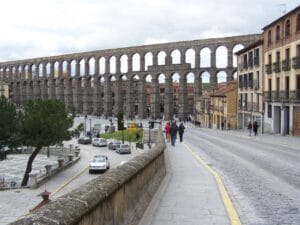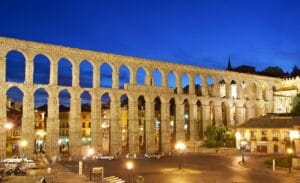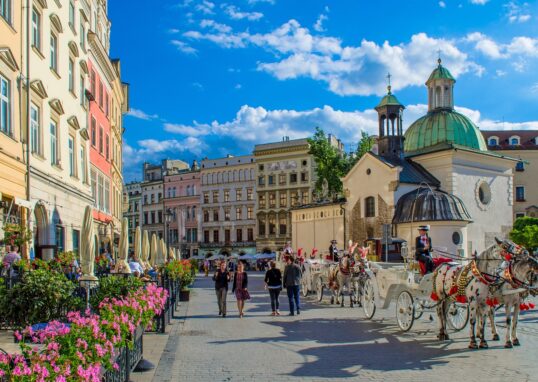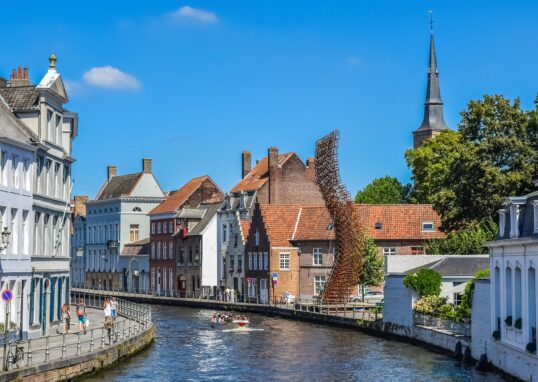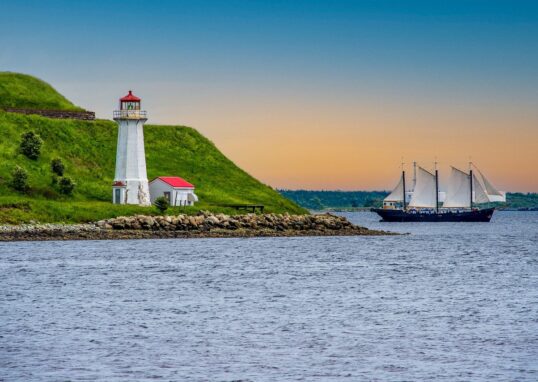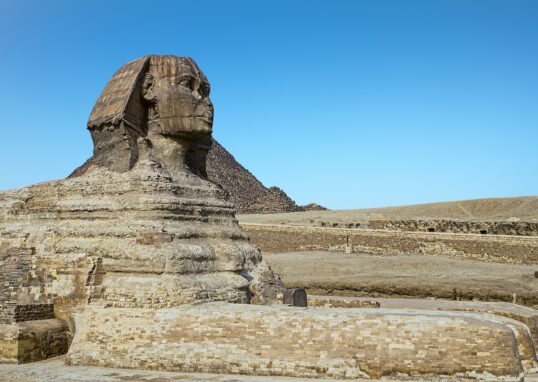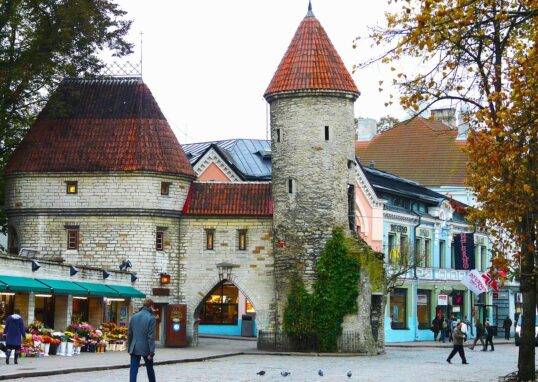
Aqueduct of Padre Tembleque Hydraulic System – A Detailed Exploration
The Padre Tembleque Hydraulic Aqueduct System stands as Mexico’s most impressive colonial engineering achievement. It is a demonstration of collaboration, technology, and cross-cultural cooperation between Spanish friars and indigenous inhabitants. The aqueduct, located in the center of Mexico, in the states of Hidalgo and Mexico State, was built in the 16th century by a Franciscan friar, Francisco de Tembleque. The edifice is a UNESCO World Heritage Site today. It not only says something about technical accomplishment but about the way different cultures worked together. The aqueduct is about 45 kilometers (28 miles) long. It carried water from the flanks of the Tecajete volcano to the dry plains of Otumba and Zempoala. This system was constructed expertly by incorporating both European experience in Roman aqueducts and local indigenous construction techniques. The product is a masterpiece that has served populations for centuries. In this article, we will explore the history, design, construction, importance, and heritage of the Aqueduct of Padr Tembleque. We will also inform you of the surrounding sites, towns, and lands that make a visit to this area traveling in time. 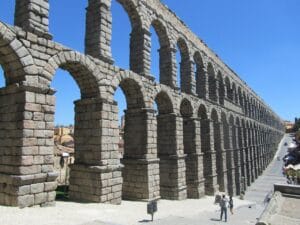
Historical Background
Water Needs in the 16th Century
When the Spanish colonizers came to Mexico, they found land that was productive but also had areas with limited water. Agriculture and settlements in the area of Zempoala and Otumba needed to be supplied with water networks. Rain was not necessarily predictable, and the indigenous people needed a reliable source of water. Friar Francisco de Tembleque, also known as Padre Tembleque, was determined to solve this problem. He believed water could improve agriculture and daily life. By his guidance, an idea of establishing a hydraulic system came to mind.
Cooperation Between Cultures
The aqueduct was not a Spanish project alone. Native workers were in charge. They used their expertise in cutting stone, local building materials, and manpower. Spanish engineers brought with them the knowledge of arches and how to build aqueducts, using as reference Roman buildings in Europe. Together, they came up with something which neither could have accomplished alone. This kind of cultural cooperation is one of the things that led UNESCO to make it a heritage of mankind.
Construction of the Aqueduct
Timeline
Construction began sometime in 1554 and took nearly 17 years, finally completing around 1571. This was a protracted undertaking, with thousands of Native laborers and careful planning.
Materials
Stone, lime, sand, and volcanic rock were the materials that were utilized by builders. Materials had to be available locally. The mortar, a strong mixture of lime and sand, allowed the arches to stand for centuries.
Design
The aqueduct was divided into three sections:
- Underground canals – where the water flowed below ground.
- Open canals – where it traveled in ground-level channels.
- Arches and bridges – where it crossed over valleys and rivers.
The most famous stretch is the series of high arches at Tepeyahualco. The arches cross a valley, and it is an image emblematic of the aqueduct. The highest of the arches stands about 38.75 meters (127 feet) tall, higher than many European aqueducts of the time.
Function and Importance
Agricultural Use
The aqueduct revolutionized farming in the region. Farmers could plant maize, beans, and other vegetables with water. Irrigation turned arid land into cultivable land.
Community Benefits
Domestic use was also of vital importance. Farmers applied it in cooking, cleaning, and for livestock. The aqueduct became a source of sustenance.
Cultural Value
Greater than a structure, the aqueduct was an emblem of cohesion. It was the way two civilizations merged and produced something that would last. It was a testament to the importance of water to public health.
Decline and Preservation
Sections of the aqueduct were abandoned during the following centuries. Modern plumbing replaced portions of the system. But immense stretches remain. UNESCO listed it as a World Heritage Site in 2015. Preservation by this status protects it and attracts visitors. Conservation efforts maintain the aqueduct as a learning facility and cultural heritage.
Visiting the Aqueduct Today
Travelers may tour the aqueduct in Hidalgo and Mexico State. Strolling between the arches at Tepeyahualco is a once-in-a-lifetime experience. The serene countryside, stone structures, and clear blue sky make it heaven for a photographer. Small villages around the aqueduct still have colonial flavor. The churches, squares, and ancient houses transport visitors to the 16th century. Residents typically tell tales about the aqueduct and Padre Tembleque.
Surrounding Places Near the Aqueduct of Padre Tembleque
Padre Tembleque Aqueduct is in the center of Mexico. It spans areas in Hidalgo and the State of Mexico. It is surrounded by a number of places to explore. They add history, nature, and culture to the trip. They introduce you to the world that built the aqueduct. We discuss them in detail below.
Tepeyahualco (The Arches Site)
Tepeyahualco is the most famous part of the aqueduct. There the arches cross a wide valley. The view is imposing. The arches rise like stone bridges. They are high and proud. People often come here to see the arches close up. The nearby village is small. It appears quiet and rural. Families of the area keep the land and the culture. You can walk under arches. You can sit on low walls and watch light fall on stone. Sunrise and sunset make the site appear magical. Nearby trails lead into open fields. The air is dry and clean. Birds fly above the arches. Local guides can explain how the stones were cut and placed. They can share stories of Padre Tembleque and the builders. Tepeyahualco makes the aqueduct feel alive.
Zempoala and Surrounding Villages
Zempoala is one of the towns that are served by the aqueduct. It has a small main square and a colonial church. Narrow shaded streets exist. At night, the people congregate in the plaza. Fresh bread and local food are sold at markets. There are little farms and haciendas near Zempoala. There are a few old houses with book-thick walls and carved doors. The terrain is mixed with fields and little hills. People farm maize, beans, and little vegetables. Men and women can be seen laboring at early hours. Zempoala is a place of remembrance as well. Local leaders refer to the time the aqueduct operated. They explain how water entered the town and changed life. A quiet walk through the town can be highly emotional. You will feel the relationship between community and water.
Otumba — History and Food
Otumba is a short drive from some parts of the aqueduct. The town is renowned for an ancient battle. The Battle of Otumba was during the Spanish conquest in the early 1500s. Nowadays, the town continues to commemorate that in small ways. Otumba is also renowned for food. Barbacoa and other slow-cooked dishes are found in domestic homes. The meat is flavorful and tender. Chilies, fresh cheese, and tortillas are marketed. Snacks and coffee are sold by street vendors. It possesses a lively, warm plaza. It is decked out in color on market days. Weavers come with handmade goods and small clay pieces. If you would like to sample local delicacies and meet kind people, Otumba is a convenient stop.
Tecajete and the Water Sources
The aqueduct’s water begins near volcanic slopes. There are springs and small catchments along the Tecajete region. These would be the reasons why the aqueduct was possible. The ground holds water under it. This was diverted by canals to towns lower down. Walking beside Tecajete, you can see how the construction engineers utilized the terrain. They stayed on gentle slopes. Where the ground sloped down, they built arches. Where the ground sloped up, they diverted rock. The trail illustrates careful planning and knowledge of the area. The volcano’s slope is serene. You may see basalt and volcanic stone in some places. Locals refer to old wells and small ditches which provided fields. These signs indicate the past of water in the community.
Piedra and Small Rural Hamlets
There are a number of small villages around the aqueduct. They have names that you will not find on big maps. They are nestled between fields and grazing land. The houses are low and built out of local stone or brick. Life is plodding in these villages. Farmers tend small flocks. Children play away from the central plaza. Women fill baskets to transport to market. Families in the villages grow flowers, herbs, and small gardens. A visit to one of these villages offers a realistic view of rural Mexico. Local handicrafts are common. There are people who carve small statues or weave belts. They use simple equipment. They sell the goods in the surrounding towns. Purchasing straightaway supports the families and maintains the continuity of the skills.
San Miguel and Parish Churches
Most towns near the aqueduct are colonial-era towns with colonial-era churches. A common name is San Miguel. They were public centers. They were where communities came to party, to mourn, and to socialize. The churches exhibit a blend of styles. Walls may be plain. Painted altars may be on some of them. Stonework surrounding doors tends to have floral or geometric patterns. There are soft-burning candles inside. The local history may be known by the parish priest. He might give you access to old records or recount stories of the aqueduct. Going for a Sunday mass is a gentle introduction to life in the neighborhood. People are turned out in their Sunday best. Families gather after mass and share meals. You’ll feel the rhythm of rural life.
Pachuca — The Mining City (Hidalgo’s Capital)
Pachuca is the big city in the region. It is farther into the state of Hidalgo. There it was historically a mining town. Silver and minerals enriched the area. This is what gave the city its look. Pachuca has museums and old mining areas. The museum of the mining industry explains the industry and miner’s lifestyle. There are broad streets lined with several shops. The central plaza is busy with people. Local pastries and drinks can be bought in cafes. The architecture of Pachuca is mixed. There are Spanish colonial buildings and later 19th-century constructions. There are parks and viewpoints in the city. From some hills, you can see the wide valleys that the aqueduct crossed.
Tula de Allende — Toltec Ruins and History
Just a short drive from the aqueduct site is Tula. Tula was the hub of the Toltec culture prior to the introduction of the Hispagnics. The site contains colossal warrior-shaped pillars. These pillars are famous. Tula’s ruins are a very different time. They show how the pre-Spanish cultures built cities and temples. The Toltec complex has ball courts, plazas, and pyramids. It gives a long view of Mexico’s ancient past. Go to Tula for a day trip. The site is good-paved and well-marked. A guide can give an explanation of the iconography and way of life of the Toltecs. The site is strong and somber.
Teotihuacan — The Great Pyramids (Regional Link)
Teotihuacan lies to the south and east of the aqueduct’s area. One of Mexico’s largest archeological sites, it houses the Pyramids of the Sun and the Moon, located on a plain surface. Avenue of the Dead comes between them. Though not located in the same valley, Teotihuacan is typically part of a wider tour. Travelers who visit the aqueduct will also incorporate Teotihuacan into their tour. The two sites are quite different in scale and history. Together, they offer a more comprehensive view of Mexico’s past. Teotihuacan is lively and well developed for tourism. There are guides, shops, and good tourist infrastructure. Walking the pyramids in the morning or evening is an experience not to forget.
Local Natural Landscapes and Wildlife
The aqueduct area is on high plateaus and low rolling hills. It is semi-dry climate. You will see prickly pear cactus, small oak, and scrubby plants. Where there are more humid valleys, farmers have trees and crops. Birdlife is plentiful. Hawks and kites soar high above fields. Songbirds are hidden in hedges. Frogs and small fish live around bodies of water. The nights are clear. The stars shine brightly away from the light of the city. The landscape is one of easy rhythm. There is variation with each season. Spring colors the fields. Harvest months bring markets. Strolling down a country path is a relaxing and great way to become familiar with the land.
Food, Markets, and Local Crafts
Food is what unites all these places. Fresh fruits, tamales, and stewed meat are found at market stalls. Tortillas and sweet breads are made in bakeries. Coffee, atole, and sometimes pulque are often local drinks. Handicrafts are an integral part of daily life. You’ll find woven fabric, pottery containers, and wooden carvings. The majority of these are made by families for consumption. Buying them gives local traditions and craftsmanship a boost. The small restaurants serve hearty meals. They employ ancient recipes. You’ll find coarse sauces, grilled meat, and thick stews. Eating here is real and warm.
Festivals, Rituals, and Community Events
Villages and towns greet the year with festivities. Festivals of patron saints offer processions and music. People dress in traditional clothes for ceremonies. There are parades, fireworks, and dances. Harvest festivals thank food. Holy Week and Day of the Dead commemorate deep traditions. At these times, the towns teem with meaning and color. If you can go to a local fiesta, you will witness the spirit of community life.
Practical Tips for Visitors
- How to get there: The region is easiest reached by car from Mexico City or Pachuca. Roads are mostly asphalted, with some rural routes primitive. Travel carefully.
- Guides: Guides from the locality are well worth it. They know the road and the stories. They can give information about the engineering and the local legends.
- What to wear: Pack good walking shoes. Pack a hat and sunblock. Days can be hot and nights cold.
- Respect: Don’t take photos of people without permission. Respect church timings. Speak softly in sacred areas.
- Buy local: Carry cash for markets. Eating locally and purchasing crafts keeps families employed.
- Best time to visit: Spring and autumn offer soft weather. Summer is hot and rainy. Winter is dry and cold.
Broader Cultural Routes
Padre Tembleque was a Franciscan, and the aqueduct fits into a larger history of Franciscan missions in Mexico. Passengers along the route can stop along the way to visit monasteries, convents, and chapels built in the same century.
The Camino Real de Tierra Adentro
This was the “Royal Road” that connected Mexico City to the north. Parts of it paralleled the aqueduct. A drive along this historic road allows travelers to connect various sites of the colonial era.
Tourism and Modern Value
The Aqueduct of Padre Tembleque is not only a cultural heritage today but also a place of cultural tourism. It is visited by architects, historians, students, and tourists. Tourism benefits local economies. They live in guesthouses, eat in family restaurants, and buy handicraft. Tourism, in turn, creates a culture of protection of the site.
Conclusion
Padre Tembleque Hydraulic Aqueduct System stands as one of the greatest colonial Mexico feats. It was built in the 16th century by combining European and native skills to introduce lasting water systems. It transformed agriculture, maintained towns, and symbolized cultural cooperation. Its stunning arches, especially at Tepeyahualco, are a monument to human creativity. Surrounding villages like Zempoala, Otumba, and Tepeyahualco add cultural depth to the journey. Nature sites like the Tecajete volcano reflect the relationship between water and earth. Visiting the aqueduct today is also a journey through the past and bonding with local culture. With its UNESCO world heritage status, it will be a treasure in the future.

